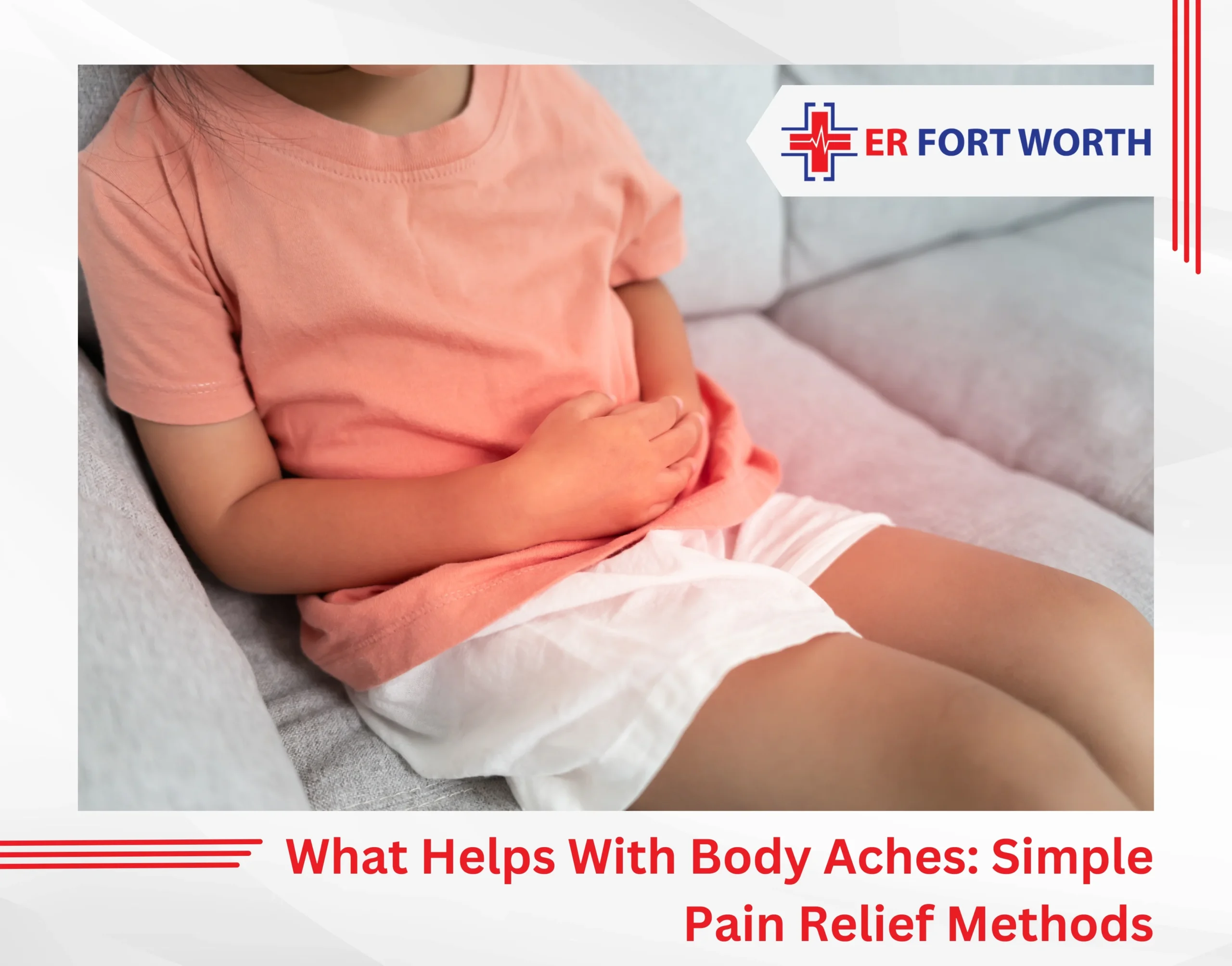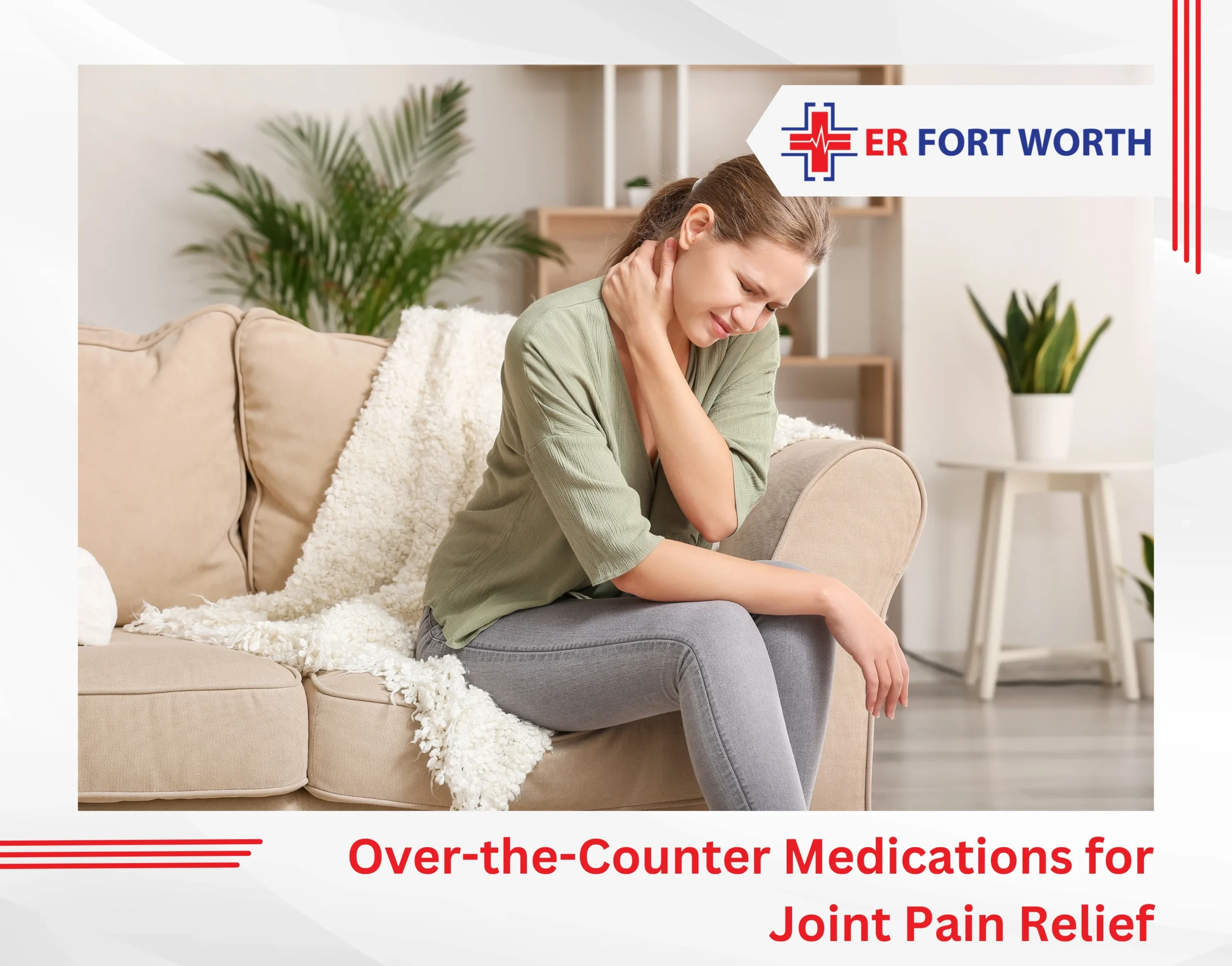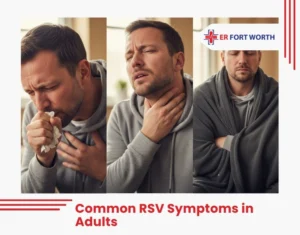Body aches are common and they happen for different reasons. Sometimes it’s a sign you’ve overworked your muscles. Other times, it’s your body fighting off an infection or inflammation.
Muscle aches often appear with viral illnesses like the flu or COVID-19, as the body’s immune response releases chemicals that cause soreness and fatigue. In fact, millions of adults report body aches each year related to stress, dehydration, or minor infections.
The good news? Most body aches improve with simple care at home. A mix of rest, hydration, gentle movement, and the right nutrition can make a big difference. So, let’s see what helps with body aches naturally, when to use over-the-counter remedies, and when it’s time to visit the ER for professional care.
Why Do Body Aches Happen?

Body aches can feel like a dull soreness, deep fatigue, or even sharp pain that spreads across your muscles and joints. Most of the time, it’s your body’s way of telling you that something needs rest or attention.
Common Causes
- Viral infections: When you’re sick with the flu, COVID-19, or another virus, your immune system releases proteins called cytokines. These chemicals fight infection but also cause inflammation and soreness throughout the body.
- Muscle overuse or strain: Intense workouts, long hours of physical work, or even sitting in one position for too long can lead to tiny muscle tears. These cause stiffness and pain, known as delayed-onset muscle soreness (DOMS).
- Stress and tension: Emotional stress can make your muscles tighten, especially around the neck, shoulders, and back. Chronic stress can even trigger headaches and body fatigue.
- Dehydration: When your body lacks fluids, your muscles lose essential electrolytes like sodium and potassium, leading to cramping and aches.
What Helps With Body Aches: Simple Pain Relief Methods

When body aches hit, you don’t always need medication right away. Small changes in rest, movement, and daily habits can ease pain and help your muscles recover faster. These natural body ache relief methods not only relieve discomfort but also support your body’s healing process.
1. Rest and Gentle Stretching
Rest is the first step toward recovery. Your muscles repair themselves while you sleep and relax. However, staying completely still for too long can make stiffness worse. Try light stretches or short walks to keep blood flowing.
2. Warm Baths, Heat Packs, Contrast Therapy
Warmth relaxes tight muscles and boosts circulation. Take a warm bath or use a heating pad on sore areas for 15–20 minutes. Heat helps loosen stiffness, while cold compresses can reduce swelling after physical activity. You can also do contrast therapy, that is alternating between warm and cold. This is helpful for post-workout soreness or inflammation.
3. Hydration and Electrolyte Balance
Dehydration can make body aches worse. When your muscles don’t have enough water or electrolytes, they cramp and fatigue faster. Drink plenty of fluids, especially water, coconut water, or electrolyte drinks if you’ve been sweating or sick.
4. Anti-Inflammatory Foods and Herbs
What you eat plays a big role in how your body heals. Turmeric and ginger contain natural compounds that fight inflammation, helping reduce muscle pain. Omega-3 fatty acids, found in fish, flaxseeds, and walnuts, also support joint and muscle recovery. Try adding these foods to your meals or drinking turmeric milk or ginger tea for added comfort.
5. Massage and Foam Rolling
A gentle massage or foam rolling session can do wonders for sore muscles. It improves blood flow, releases tightness, and helps break down lactic acid buildup, a common cause of post-workout pain. If you have persistent tension, consider professional bodywork such as deep tissue or sports massage for longer-term relief.
Over-the-Counter Medications for Joint Pain Relief

If natural muscle ache remedies don’t fully ease the pain, over-the-counter (OTC) or prescribed treatments can provide faster, more targeted relief. These options help reduce inflammation, relax tense muscles, and make it easier to move comfortably while your body heals.
1. NSAIDs and Analgesics (Ibuprofen, Acetaminophen)
Nonsteroidal anti-inflammatory drugs (NSAIDs) like ibuprofen help lower inflammation and pain. It is usually safe for short-term use when taken as directed. However, overuse can cause side effects such as stomach irritation or liver strain. Always follow dosage instructions and talk to a healthcare professional before combining them or taking them long-term.
2. Topical Creams and Patches
Topical pain relievers can target sore spots without affecting your whole system. Creams, gels, and patches with ingredients like menthol and lidocaine provide localized relief by numbing nerve endings or improving blood flow. These are especially useful for joint pain, muscle knots, or back stiffness. Apply them as directed since too much can irritate sensitive skin.
3. Physical Therapy
If body aches become chronic or affect daily movement, a physical therapist can help identify muscle imbalances and design a safe recovery plan. Guided exercises strengthen weak areas, improve flexibility, and prevent future pain.
Conclusion
Understanding what helps with body aches depends on identifying the cause. Rest, hydration, gentle movement, and proper nutrition address most cases effectively. These approaches work whether your discomfort stems from overexertion, stress, dehydration, or a viral infection.
However, if pain persists beyond a few days, spreads to new areas, or comes with high fever, severe fatigue, or unexplained swelling, professional evaluation becomes necessary. These symptoms can signal underlying conditions requiring medical diagnosis and treatment beyond home remedies.
At Fort Worth ER, our medical team is available 24/7 to diagnose and treat the cause of your body aches. We offer immediate, personalized care so you can start feeling better faster.




